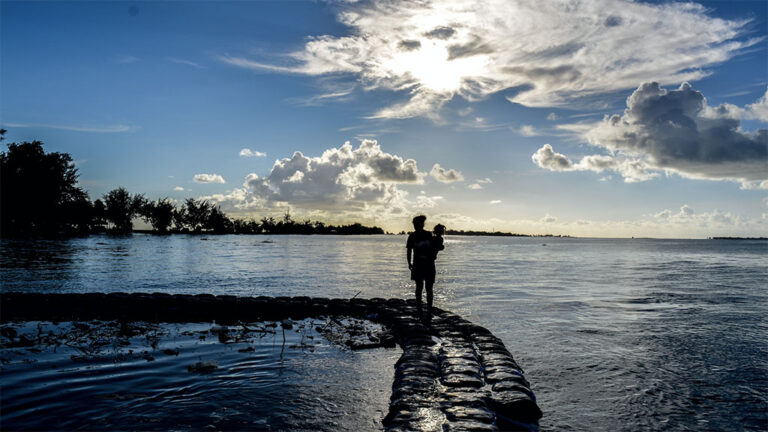A Kiribati national, after unsuccessful attempts to get asylum in New Zealand, brought his case to the UN Human Rights Committee. In spite of its negative ruling, the Committee seems to have opened the doors for granting protection for people at risk of displacement from climate change in the future.
Ioane Teitiota is a national of the island state Kiribati who fled his country and sought asylum in New Zealand. He was however unsuccessful and, after exhausting all domestic remedies, sought protection of his right to life at the UN Human Rights Committee. Composed of 18 independent experts, the Committee oversees adherence to the International Covenant on Civil and Political Rights and allows individual complaints against states for alleged violations.
Pacific low-lying island states are among those most impacted by climate change, with rises in sea levels threatening their very existence. Although the Committee did not rule in petitioner’s favour, the Tetitiota’s case is described as historic, a wake-up call, and a step forward.
In light of the particular circumstances of Teitiota’s case, the Committee could not establish New Zealand’s violation of his right to life under the Covenant. It has been established that the 10 to 15 years’ time frame indicated by Teitiota allows Kiribati to protect or relocate its population, if necessary. The Committee did nevertheless acknowledge that, as a general principle, a receiving country should not deport persons fleeing climate-induced conditions that threaten their lives.
It is noteworthy that two Committee members formally dissented from the findings that New Zealand was justified to deny asylum and order his deportation. They found, among others, that Teitiota’s life conditions are “significantly grave”, especially with regards to safe drinking water access, and pose “a real threat to his life”, where the Commission is called upon to handle “significantly irreversible issues of climate change”. Either way, to Kate Schuetze, Pacific researcher for Amnesty International, the message of this case is clear: “Pacific Island states do not need to be under water before triggering human rights obligations to protect the right to life”.
One unsettled issue is that there is no internationally recognized definition of “climate refugee”. The UN 1951 Refugee Convention offers no ground to accept environmental degradation as “persecution”. Despite these legalistic constraints, the UN Human Rights Committee seems to have opened the doors to address this protection gap for future cases.
In this context, Prof. Jane McAdam, director of the Refugee Law Centre at the University of New South Wales, reminds of the Global Compact on Safe, Orderly and Regular Migration – a 2018 agreement that urges governments to create more flexible migration schemes protecting against the adverse effects of climate change. “The blueprints are already there; our leaders just need to find the political will to implement them”, adds McAdam.


